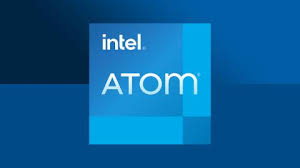The potential of Intel Atom Processors: Innovation
Intel Atom processors have become increasingly popular and widely used in the tech industry. This comprehensive guide aims to provide a deep understanding of Intel Atom and its significance. By exploring its evolution, applications, advantages, and limitations, readers will gain insights into how to leverage the power of Intel Atom for their specific needs.
Intel Atom

What is Intel Atom?
Intel Atom is a type of processor designed by Intel Corporation specifically for low-power devices. It offers a balance between performance and power efficiency, making it ideal for portable devices and embedded systems. The unique characteristics of Intel Atom processors enable them to deliver efficient processing power while consuming minimal energy.
Evolution of Intel Atom
Intel Atom processors have undergone significant development since their introduction. Over the years, Intel has made important advancements in performance and efficiency. These improvements have been achieved through architectural enhancements, process technology advancements, and the integration of new features. The evolution of Intel Atom has resulted in processors that are capable of delivering better performance with reduced power consumption.
Applications of Intel Atom
Intel Atom processors find applications in a wide range of devices and industries. They are commonly used in smartphones, tablets, IoT devices, and embedded systems. The power efficiency and compact size of the Intel Atom make it suitable for portable devices, while its processing capabilities enable it to handle various tasks in industrial and commercial settings. Intel Atom processors have become a popular choice for developers and manufacturers looking to create efficient and reliable devices across different sectors.
Features of Intel Atom
Intel Atom processors offer several key features that contribute to their popularity. These include power efficiency, multi-core processing, graphics performance, and connectivity options. The power efficiency of Intel Atom processors allows for longer battery life in portable devices. The availability of multi-core processors enables efficient multitasking and improved performance. Intel Atom processors also provide integrated graphics capabilities, allowing for enhanced visual experiences. Additionally, they offer various connectivity options, enabling seamless integration with different devices and networks.
Advantages and Limitations of Intel Atom
Advantages of Intel Atom
Intel Atom processors come with several advantages that make them a preferred choice for many applications. One of the key advantages is their power efficiency, which allows for longer battery life in portable devices. The compact size of Intel Atom processors also makes them suitable for small form factor devices. Additionally, Intel Atom processors generate less heat, reducing the need for complex cooling mechanisms. This makes them ideal for fanless designs and devices with limited space for heat dissipation. Moreover, Intel Atom processors offer a cost-effective solution for manufacturers, as they provide a balance between performance and affordability.
Limitations of Intel Atom
While Intel Atom processors have many advantages, they also have certain limitations to consider. One of the limitations is their performance compared to higher-end processors. Intel Atom processors are designed for low-power devices, so they may not deliver the same level of performance as processors designed for high-performance computing. Another limitation is the limited scalability of Intel Atom processors. They may not be suitable for applications that require extensive scalability and processing power. Additionally, compatibility issues can arise when using software or applications that are optimized for other processor architectures. However, these limitations can often be mitigated by optimizing software and applications for Intel Atom processors or by utilizing other complementary technologies.
Intel Atom in Action
Intel Atom in Mobile Devices
Intel Atom processors have made their mark in the mobile device industry, powering smartphones and tablets. Their power efficiency and processing capabilities contribute to improved device performance and longer battery life. Intel Atom-powered mobile devices offer seamless multitasking, smooth graphics performance, and enhanced connectivity options. Notable Intel Atom-powered devices include smartphones with advanced camera features and tablets with high-resolution displays. These devices provide a great user experience, whether it’s for gaming, multimedia consumption, or productivity tasks.
Intel Atom in IoT and Embedded Systems
Intel Atom processors play a crucial role in the Internet of Things (IoT) ecosystem and embedded systems. Their power efficiency and compact size make them well-suited for IoT devices that require low energy consumption and small form factors. Intel Atom processors enable connectivity, data processing, and control in IoT devices, allowing for seamless integration with other devices and networks. They are also utilized in embedded systems for various applications such as industrial automation, smart home devices, and healthcare monitoring systems. Intel Atom’s reliability and stability make it an ideal choice for these critical applications.
Intel Atom in Industrial and Commercial Settings
Intel Atom processors find extensive use in industrial and commercial settings. Their power efficiency, low heat generation, and stability make them suitable for applications in industrial automation, retail point-of-sale systems, digital signage, and more. Intel Atom-powered devices can handle demanding tasks in these environments while maintaining energy efficiency and reliability. These processors enable seamless communication, data processing, and control in industrial and commercial systems, contributing to increased productivity and efficiency.
Future Developments and Trends
Intel Atom’s Role in Emerging Technologies
Intel Atom processors are positioned to support emerging technologies such as artificial intelligence (AI), edge computing, and 5G. Their power efficiency and processing capabilities make them suitable for AI applications at the edge, where real-time processing is required. Intel Atom processors can handle the computational demands of AI algorithms while minimizing energy consumption. Additionally, their integration with 5G networks enables faster and more efficient data transfer, opening up new possibilities for connected devices and applications.
Intel Atom’s Evolution and Roadmap
Intel continues to invest in the development of Intel Atom processors, with a focus on improving performance, power efficiency, and integration capabilities. The roadmap for Intel Atom includes advancements in process technology, architectural enhancements, and feature integration. Future iterations of Intel Atom processors are expected to deliver even better performance and efficiency, enabling new use cases and applications across various industries.
FAQs
What are the main differences between Intel Atom and other Intel processor families?
Intel Atom processors are designed for low-power devices, while other Intel processor families cater to different performance requirements. Atom processors prioritize power efficiency and compact size, making them suitable for portable devices and embedded systems, whereas other families like Core processors focus on higher performance and scalability.
Can Intel Atom processors handle demanding tasks like gaming and video editing?
While Intel Atom processors may not offer the same level of performance as higher-end processors, they can still handle basic gaming and video editing tasks. However, for more demanding applications, it is recommended to use processors from Intel’s higher-performance families like Core or Xeon.
How does Intel Atom contribute to energy efficiency in portable devices?
Intel Atom processors are designed to be power-efficient, consuming minimal energy while delivering adequate performance. This power efficiency contributes to longer battery life in portable devices, allowing users to use their devices for extended periods without the need for frequent charging.
Are there any compatibility issues when using Intel Atom processors?
Compatibility issues can arise when using software or applications that are optimized for other processor architectures. However, many software developers and manufacturers optimize their products to ensure compatibility with Intel Atom processors. It is always recommended to check the system requirements and compatibility of the software before installation.
What are the key considerations for selecting an Intel Atom-based device?
When selecting an Intel Atom-based device, it is important to consider the specific requirements of your use case. Factors to consider include the desired performance level, power efficiency, form factor, connectivity options, and compatibility with software and peripherals. It is also beneficial to read reviews and compare different models to find the device that best meets your needs.
Can Intel Atom processors support virtualization?
Yes, Intel Atom processors support virtualization technologies such as Intel Virtualization Technology (VT-x) and Intel Virtualization Technology for Directed I/O (VT-d). These technologies enable the creation and management of virtual machines on Intel Atom-based systems, allowing for the efficient utilization of resources and the isolation of different operating environments.
How does Intel Atom compare to ARM-based processors in terms of performance and power efficiency?
Intel Atom and ARM-based processors are designed for different types of devices and have different architectural approaches. ARM-based processors are commonly found in mobile devices and offer excellent power efficiency. Intel Atom processors, on the other hand, provide a balance between performance and power efficiency. While ARM-based processors excel in power efficiency, Intel Atom processors can deliver higher performance for certain applications. The choice between Intel Atom and ARM-based processors depends on the specific requirements of the device and the intended use case.
What are the security features offered by Intel Atom processors?
Intel Atom processors come with various security features to protect against security threats. These include Intel Trusted Execution Technology (TXT), which helps protect sensitive data and prevent unauthorized access, and Intel Identity Protection Technology (IPT), which provides hardware-based authentication and secure online transactions. Additionally, Intel Atom processors support features like hardware-enhanced virus protection and secure boot to ensure a secure computing environment.
Are there any known issues or vulnerabilities associated with Intel Atom?
Like any technology, Intel Atom processors may have vulnerabilities that are discovered over time. However, Intel actively works to address these vulnerabilities through firmware and software updates. It is important to keep the operating system and firmware of Intel Atom-based devices up to date to ensure the latest security patches are applied.
How does Intel Atom contribute to the Internet of Things (IoT) ecosystem?
Intel Atom processors play a vital role in the Internet of Things (IoT) ecosystem by providing low-power, high-efficiency processing capabilities. They enable connectivity, data processing, and control in IoT devices, allowing for seamless integration with other devices and networks. Intel Atom processors are used in a wide range of IoT applications, including smart homes, industrial automation, healthcare monitoring, and more. Their power efficiency, reliability, and compatibility make them a popular choice for IoT developers and manufacturers.
Conclusion
Intel Atom processors have become an integral part of the tech industry, offering a balance between performance and power efficiency. Understanding the unique characteristics, applications, advantages, and limitations of Intel Atom is essential for leveraging its power effectively. Whether in mobile devices, IoT systems, or industrial settings, Intel Atom processors continue to evolve and contribute to the advancement of technology. By embracing the power of Intel Atom, users can unlock new possibilities and drive innovation in their respective fields.




